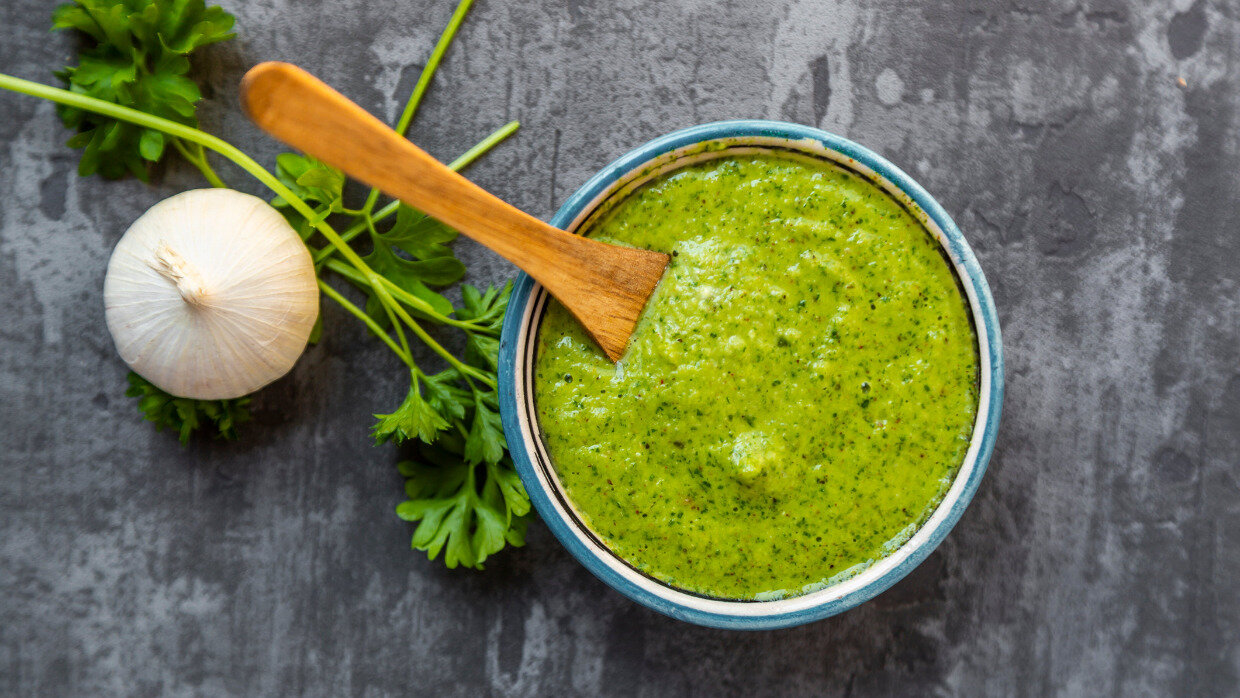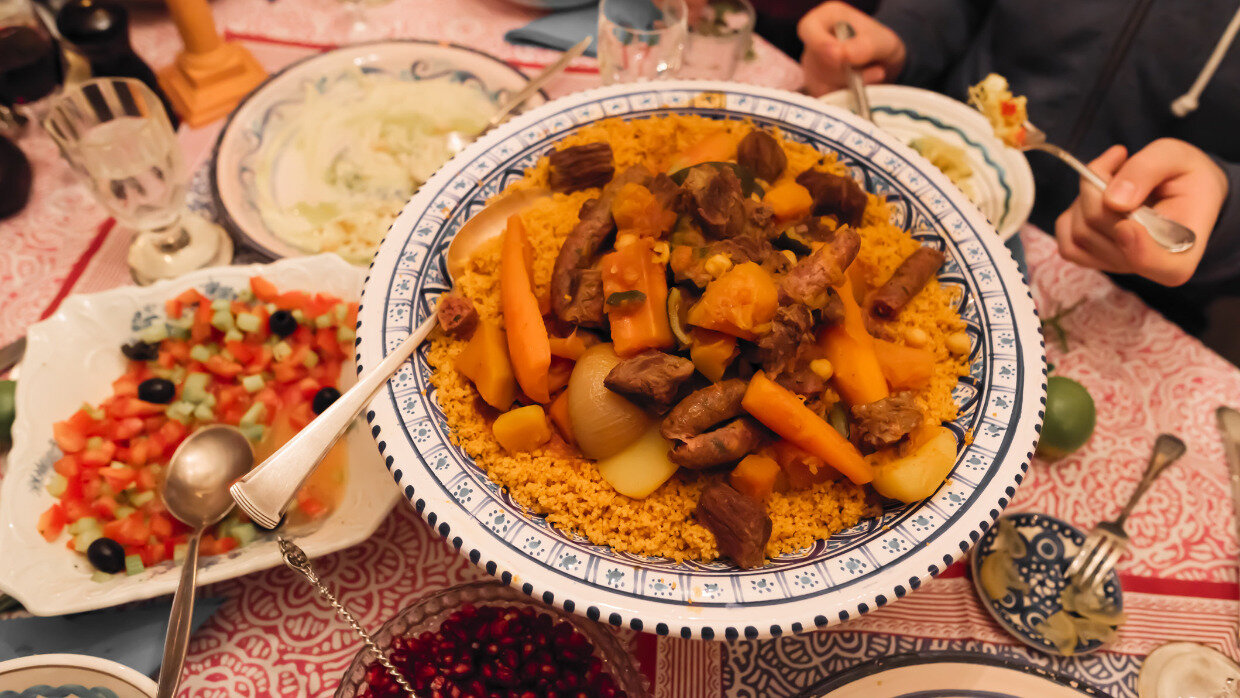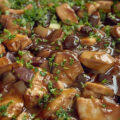It’s hard to explain the impact of Tunisian Jewish cuisine on the Israeli palate. You just have to see for yourself at any wedding, Bris, or Bar/Bat Mitzvah. Small carts and stands filled to the brim with tasty Tunisian Hors D'oeuvres like briks, bowls of couscous and soup, and tuna fricassees. In this article, we’re going to introduce these dishes and more and dive deep into the wide world of Jewish Tunisian cuisine.
Where it Began
As a small but historic Jewish community in the North African region, Tunisian Jews developed a unique culinary and cultural identity that combined local Berber and Arab flavors and customs with Jewish kosher dietary laws and traditions.
Jews have lived in Tunisia for over 2,000 years. Jews first arrived After the Roman destruction of the Second Temple in Jerusalem in 70 CE, without a place to live, many of the exiled Jews settled in Tunisia. Over time, the Jews in Tunisia developed their own cuisine, combining regional cooking customs and ingredients with Kosher regulations and the food they were familiar with.
One of the hallmarks of Jewish Tunisian cuisine is its incorporation of local ingredients and produce like olive oil, garlic, cumin, coriander, chili peppers, chickpeas, figs, and dates into their dishes. By using regional vegetables and fruits as well as techniques learned from their neighbors, they created the iconic dishes served to this day in Israel, France, and modern fine dining restaurants looking to elevate the dishes the chefs grew up on.

The Island of Djerba is where most of the Jewish population originates from, and it has its own regional cuisine. Take Chermoula, a fantastic North African sauce that’s a mixture of coriander, parsley, chili, paprika, garlic, cumin, and olive oil. It is traditionally served with fish to provide a flavorful topping.
 Source: VeredGuttman.com
Source: VeredGuttman.com
T’fina pkaila, more commonly known as pkaila, is one of the most emblematic dishes of Tunisian Jewish cuisine. Pkaila is a dish made of white beans and spinach simmered overnight with spices and flavorful hard-boiled eggs. Pkaila means Spinach in Arabic. On Shabbat, Jews don’t cook, so all preparation must be done before, which is why Pkaila is the perfect dish since it continues to cook and develop flavor overnight.
 Source: 196flavors.com
Source: 196flavors.com
There’s also Nikitouches, Tunisian pasta balls made from fine semolina, oil, and egg yolk, which are generally prepared in chicken broth and served similar to couscous.

Matbucha is another classic in Tunisia. Technically a salad, this tomato and roasted pepper spread is one of the most delicious things in the world. You can use it to top your meats, challahs, and Schnitzel.
According to urban legend, the recipe for Tunisian Fricassee originated in the 19th century in a Tunisian Jewish home. The hostess had prepared a massive batch of fried dough fritters for dessert for guests who never showed up, so instead of rolling them in sugar, she had to get creative.
View this post on Instagram
So rather than make a dessert, she simply stuffed them with whatever she had available, like Tuna, potato, preserved lemon, and Harissa, and topped it all off with a hard-boiled egg. While she was nervous about how it would come out, it was a massive hit, and her family spread the word about their signature creation. Now, it’s become a staple of Tunisian Jewish cuisine, and we have the flaky family to thank for this flaky and delicious treat.
Like many other countries in Northern Africa, they like their food spicy, lemony, and over couscous. But what makes the food in Tunisia stand out is the range of influences they take from.
Evolution of Flavor
Under Arab rule from the 7th century onwards, Jewish Tunisian cuisine had a new look. With new spices, cooking techniques, and dishes borrowed from regional Arab-Islamic food culture.

This is when popular street foods like Brik, a deep-fried Tunisian pastry filled with herbs and a runny egg in the center, first made their appearance. Making for one of the most delectable bites you can find anywhere. Usually accompanying this street food snack is Harissa, a native Tunisian spicy pepper spread. Harissa also happens to be one of my favorite condiments. I shmear it on everything from burgers to pizza and even Bourekas.

Shakshuka is another classic dish that originates from this time period of culinary innovation in Tunisia. While the majority of Tunisian dishes include meats and seafood, there are a select few that appeal to a vegetarian audience as well.
 Source: TheTunisianWay.com
Source: TheTunisianWay.com
Enter Keftaji, a mixture of fried vegetables. Traditionally made with potatoes, tomatoes, green peppers, eggs, pumpkins, and zucchini, all fried and cut into cubes and added to a bowl of Harissa and scrambled eggs. It is then mashed up for a flavorful, crunchy, and complex side dish perfect for spicy merguez sausages or grilled liver.
 Source: Afooda.com
Source: Afooda.com
Banataj is a potato-based dish that’s traditionally eaten on Jewish holidays and festivals. These croquettes look a bit like latkes but are made with spiced mashed potatoes.
For our final course, we’re lucky that Tunisia has such a rich culture of desserts. In addition to classics like Baklava and Semolina cookies, Tunisian Jewish cuisine has some very unique desserts. Tunisian pastries make use of dates, Aleppo pine seeds, pomegranates, as well as sorghum or chickpea flour.
 Source: CarthageMagazine.com
Source: CarthageMagazine.com
Youyous are small donuts soaked in syrup and garnished with anything from pine nuts or orange peels to sesame seeds.

Tunisian Jews break their Yom Kippur fast with Bolo. This lightly sweetened small roll or cookie is dotted with raisins, fennel seeds, sesame seeds, and sometimes nuts and nigella seeds. They are shaped it into an oval roll or small oval loaf that’s then sliced and served warm.
At its peak before 1948, the Jewish population was over 100,000. Now, only 1,000 Jews are left in the once robust community in Tunisia. After Tunisia's independence in 1956, the majority of the Jews left for greener pastures in France and Israel, bringing with them their rich culinary practices and dishes. Spanning centuries of North African Jewish history and cultural convergence. Its diverse flavors and dishes stand as edible symbols of the rich, multicultural civilization of Tunisia. At once complex, spicy, sweet, and satisfying, Jewish Tunisian cuisine lives on in Israeli weddings and festivities.


















Thank you for article on Tunisian food
Love these recipes my husband is from Tunisa and I from the USA so this great. But where is the traditional meat Couscous recipe so hard to find.
Thanks hope we find one soon.
Thanks for the comment and for asking, I will work on getting one of those.